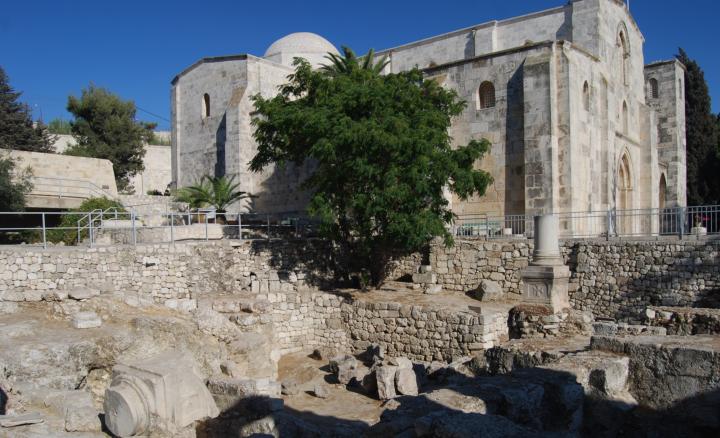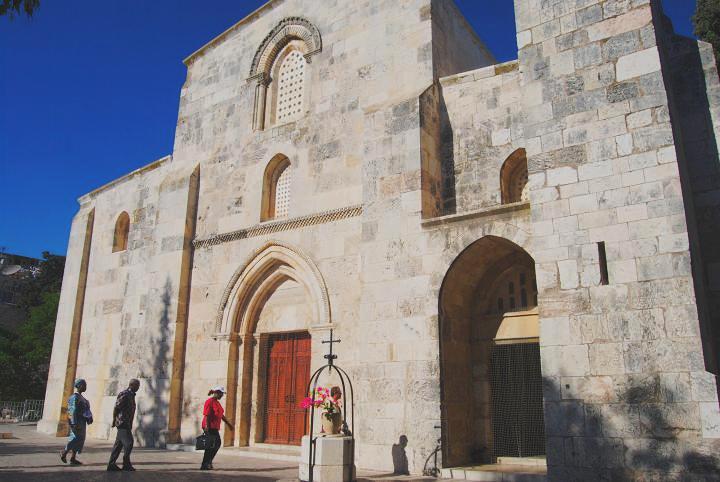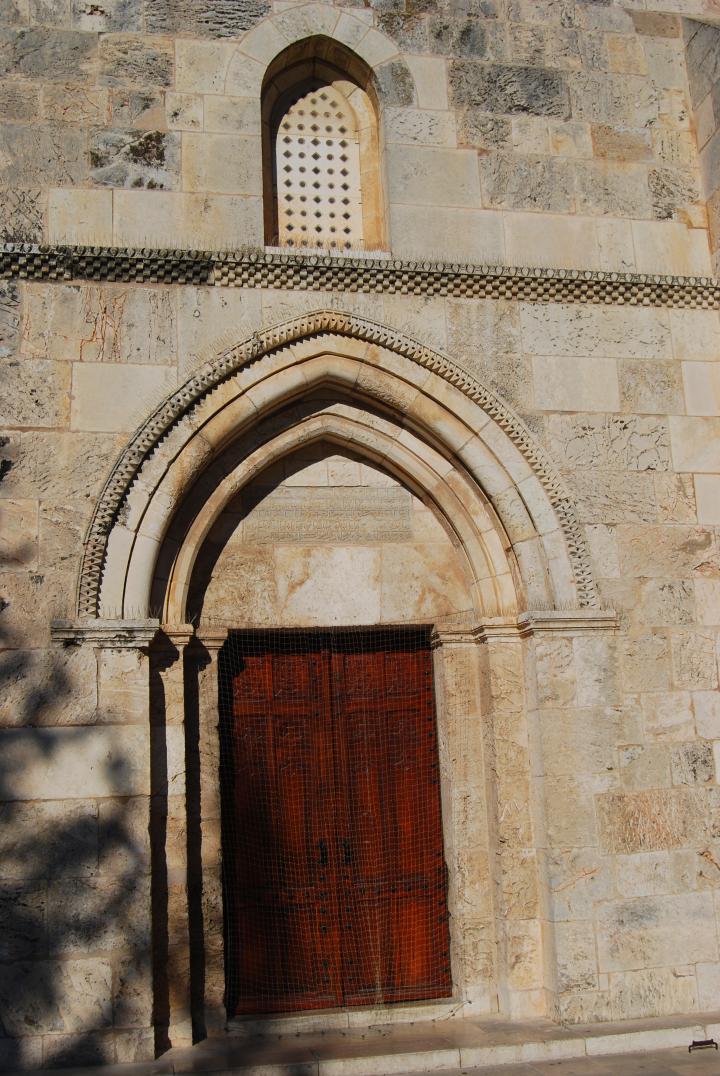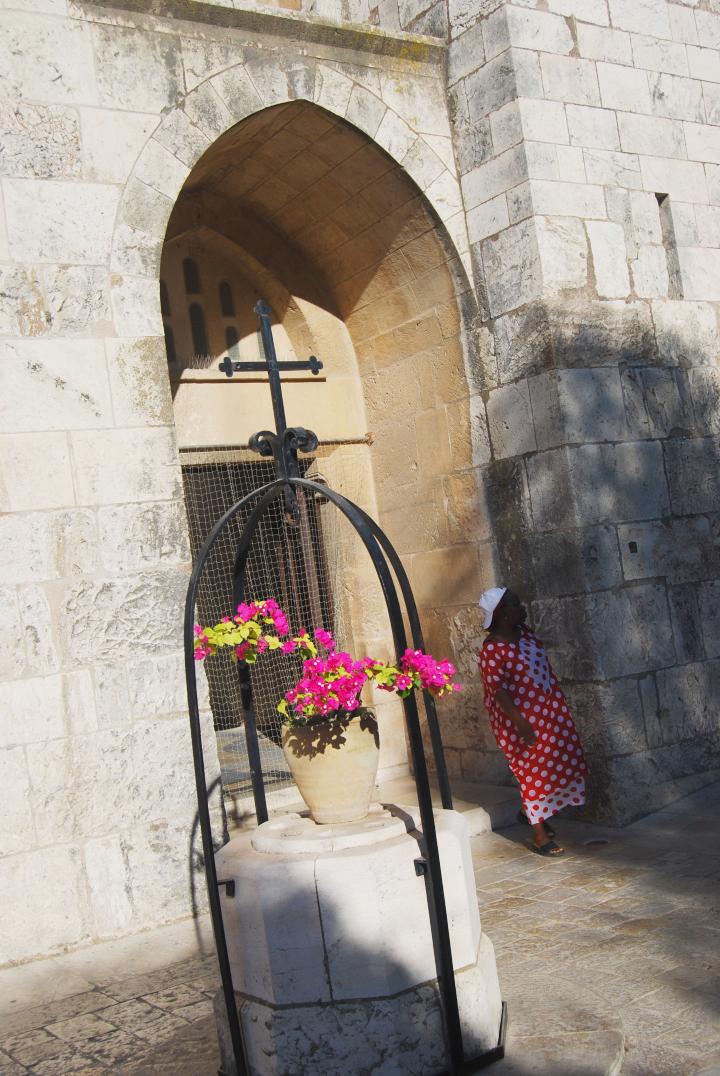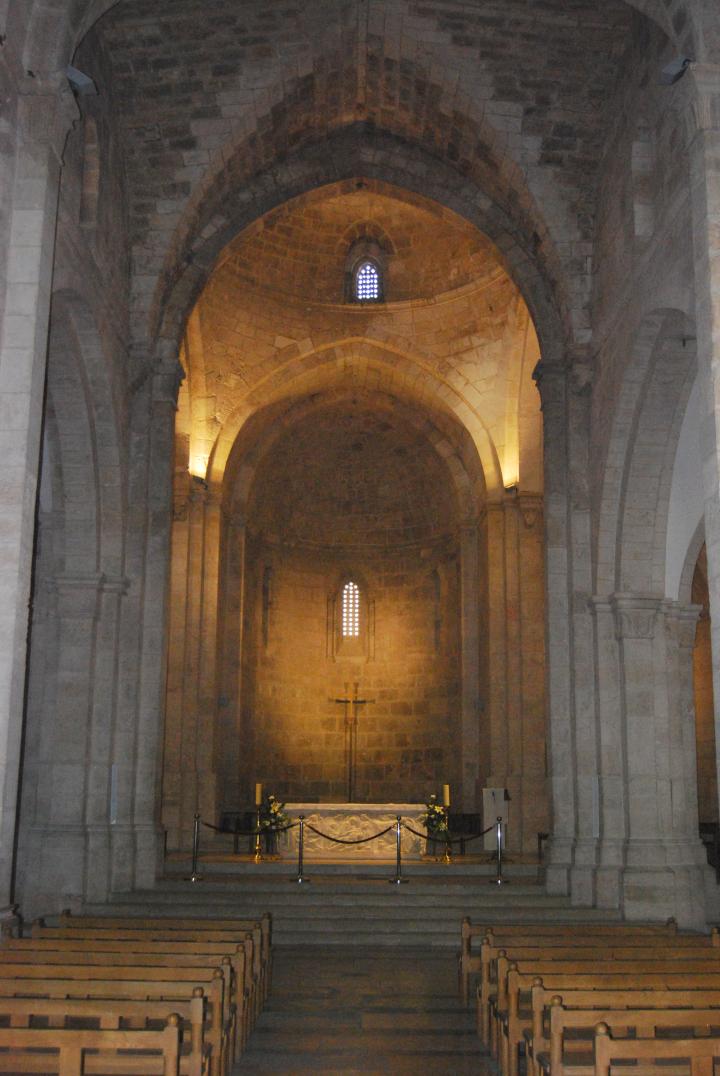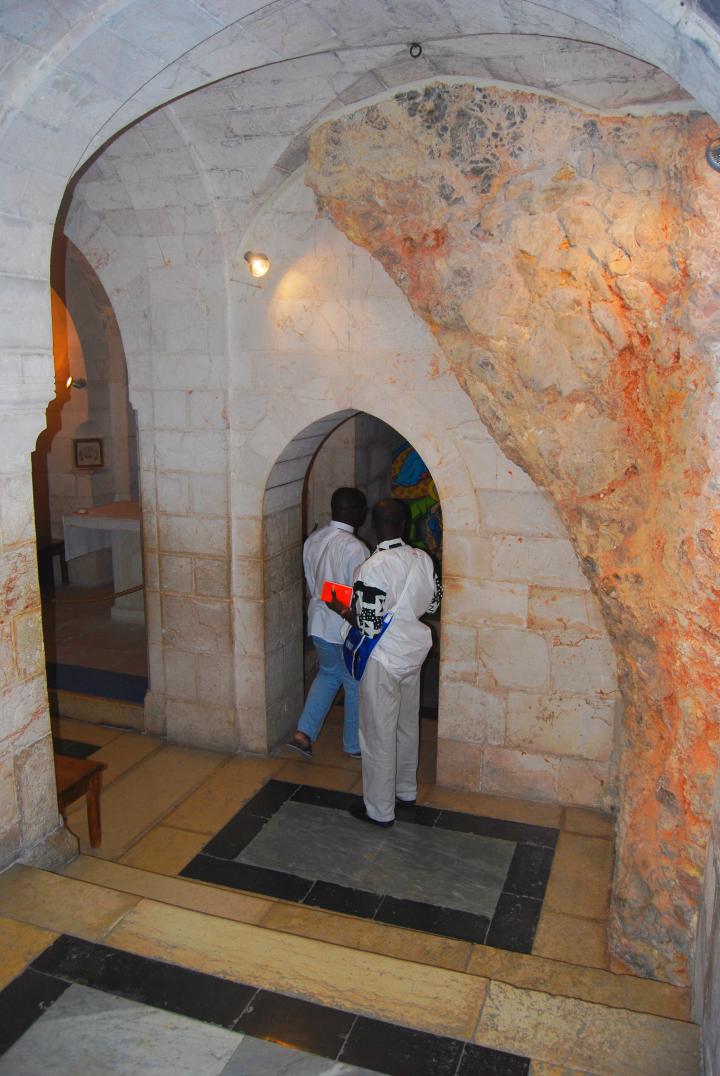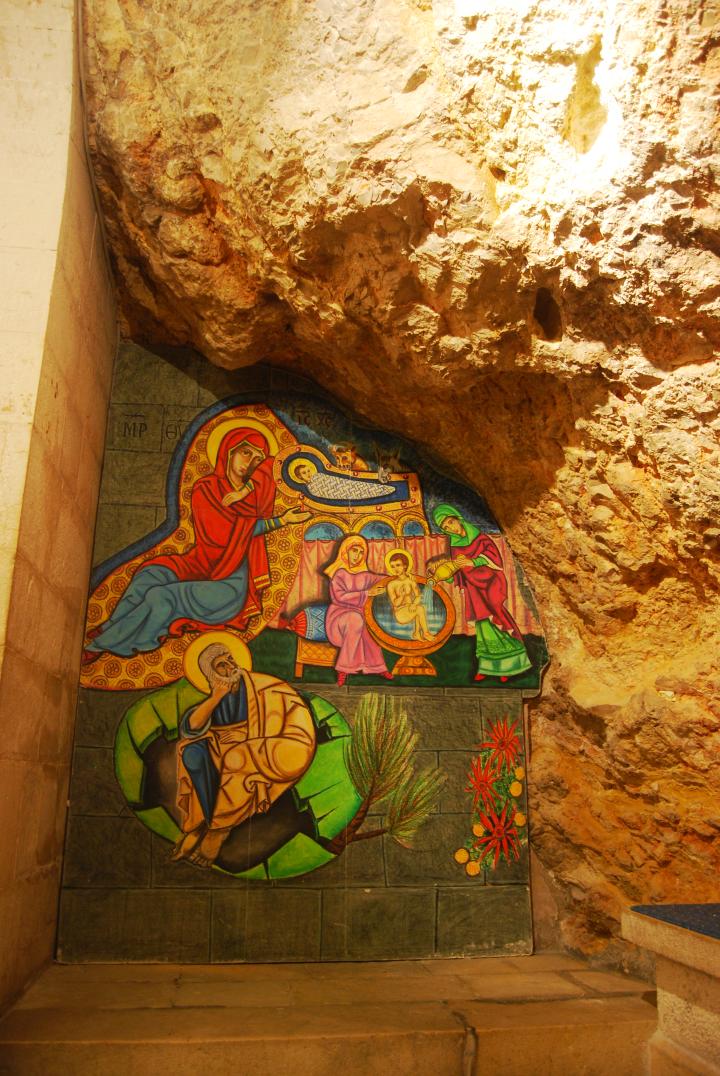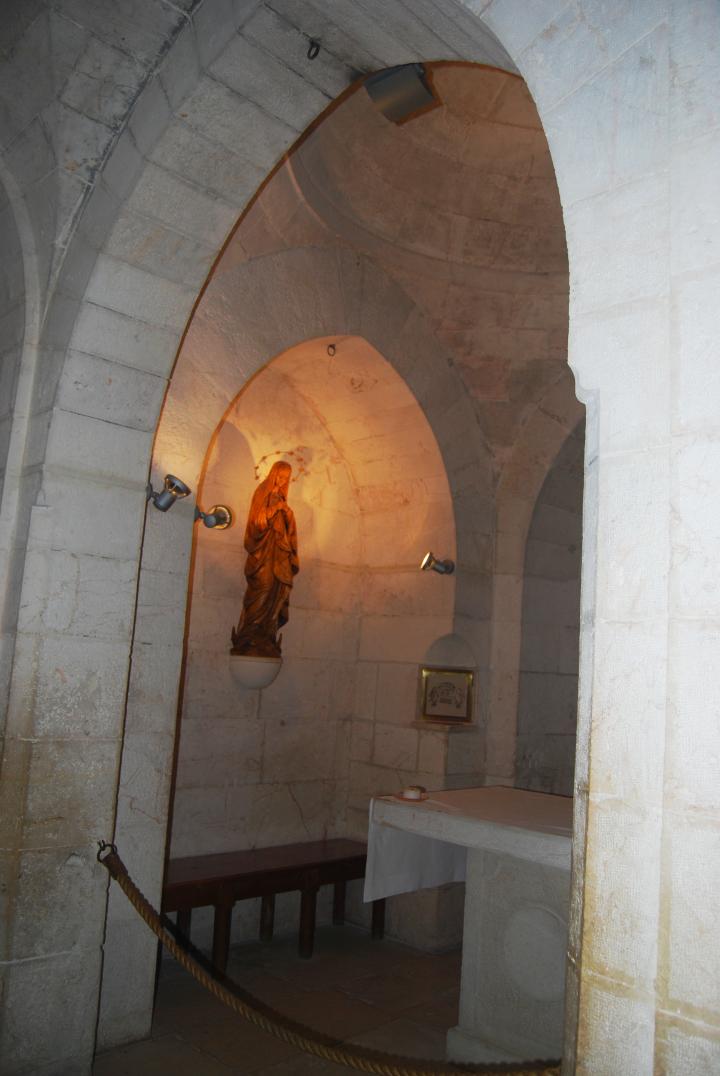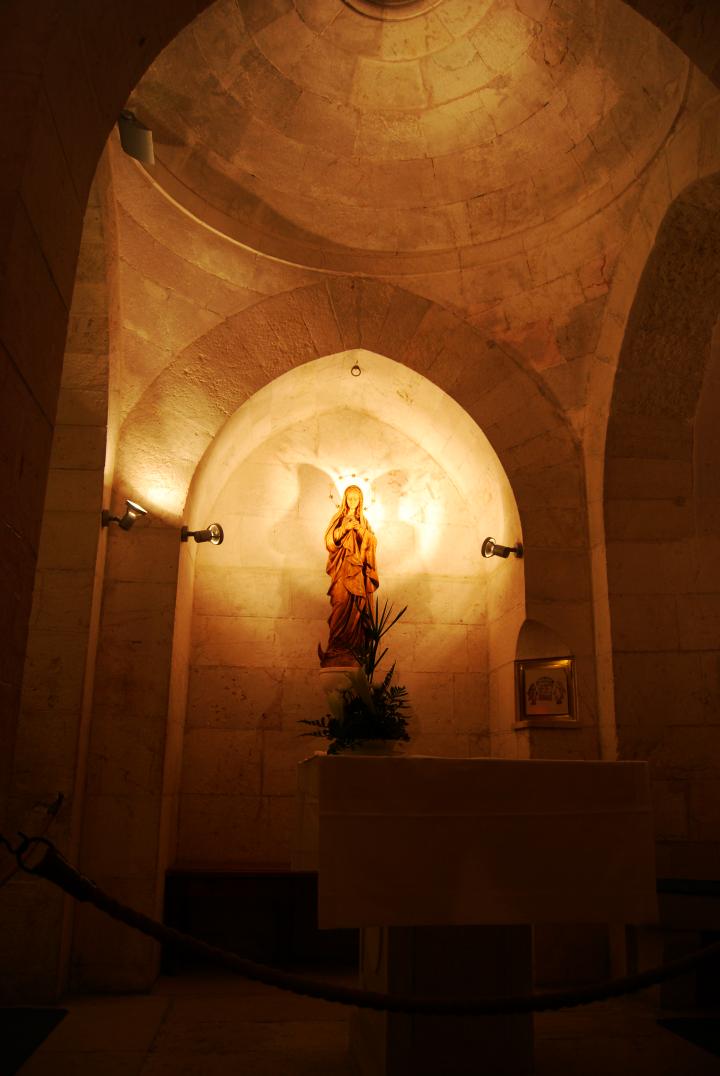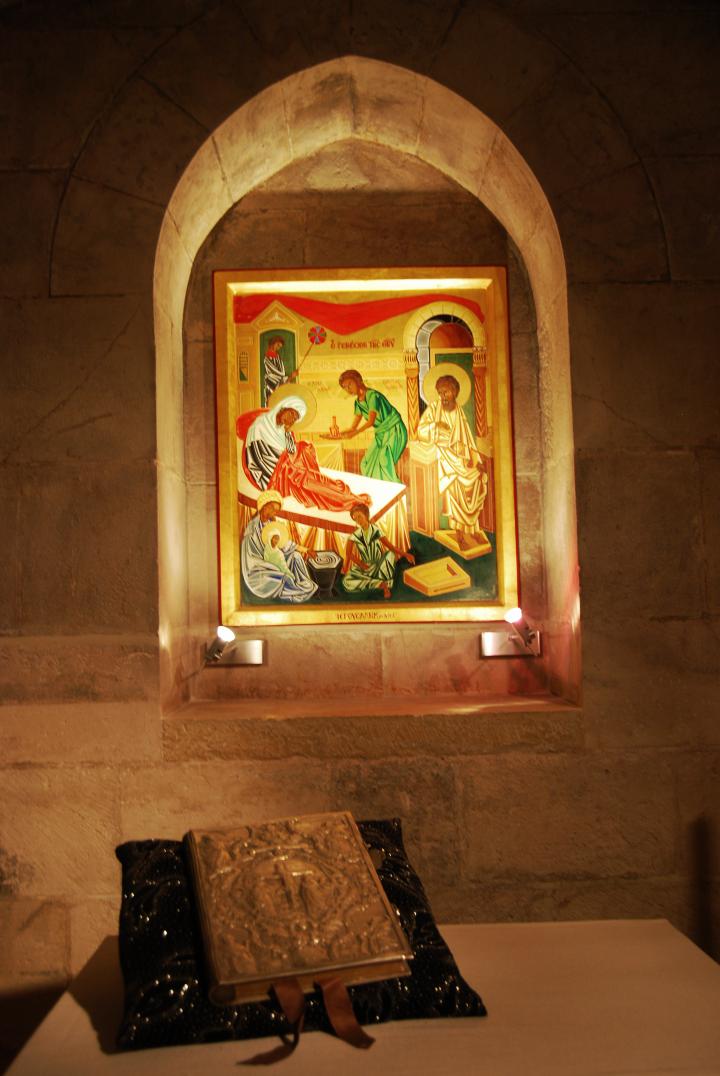This large and beautiful church is near the Lions gate, and adjacent to the site of the pools of Bethesda. It is one of the few surviving large structures from the Crusaders period.
Home > Sites > Jerusalem > St. Anna
Contents:
Overview
Location
History
Photos
* General view
* Entrance
* Interior
* Crypt
Links
Overview:
The St. Anna Church is a Roman Catholic church located in the Muslim Quarter of the Old City of Jerusalem, Israel. It is situated near the Lions Gate, which is one of the entrances to the Old City. It it is also adjacent to the site of the pools of Bethesda.
The church is dedicated to St. Anne, the mother of the Virgin Mary and the grandmother of Jesus. According to tradition, St. Anne was born in Jerusalem and lived there with her husband, Joachim, and their daughter Mary.
The current church building dates back to the 12th century, and it is considered one of the best examples of Crusader architecture in Jerusalem. It is one of the few surviving large structures from the 12th century Crusaders period.
The church features a Gothic nave, a Romanesque crypt, and a bell tower that was added in the 19th century. Inside the church, visitors can see beautiful stained glass windows and frescoes depicting scenes from the life of St. Anne and the Virgin Mary. There is also a small museum that displays artifacts from the Crusader period.
The St. Anne Church is also known for its excellent acoustics, and it is a popular site for choral performances and concerts. It is open to visitors of all faiths, and it is an important pilgrimage site for Catholics who wish to honor St. Anne and the Virgin Mary.
Location:
An aerial view is seen below showing the location of the church.
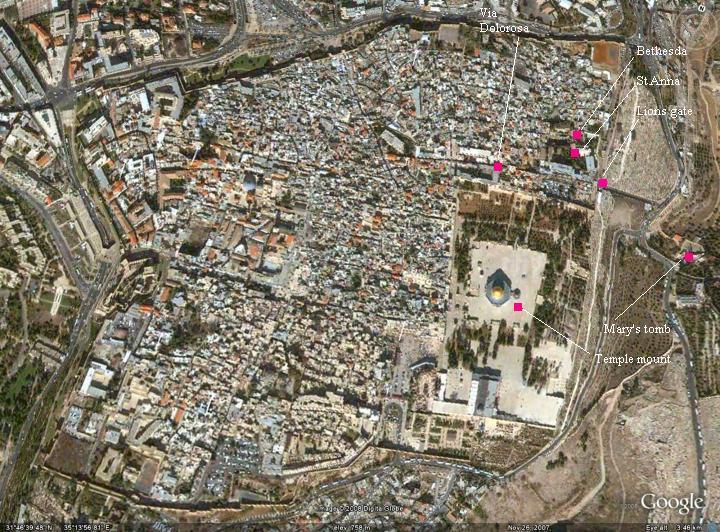
History:
- The water systems in early times
The Church of St. Anna was constructed in the area of the Bethesda water reservoirs, which supplied water to the temple mount. The first pool was constructed during the first temple, based on a dam that collected water from the valley and directed it to the temple. During the 3rd century BC a second pool was constructed, which later was expanded and turned into a popular healing center.
Herod the Great constructed a new water system, making the two pools obsolete. In 44AD Herod Agrippa constructed a new wall, which blocked the water entirely, and so the pools were converted for other use. Until the 5th century the area was converted to a baths center, and a Roman temple was erected.
- Byzantine period – the first church
When Juvenal was Patriarch of Jerusalem (422-458), a large basilica (45M x 18M) was constructed in the area of the pools. It was supported by seven arches, and was built over the dike and pools. It was dedicated to “St. Mary of the Probatic”.
- Persian and Arab period – destruction
In 614 the Persians partially damaged and burned the structure. It was later repaired, but then totally destroyed by the Arab rulers in 1010.
- Crusaders period – reconstruction
The Crusaders rebuilt the ruined Byzantine church after conquering the city in 1099, and added a chapel above it. It became a monastery.
- Crusaders period – St Anna
In 1140 a large Church was built in a new site south of the pools, where the present Church stands today, and above the caves which were according to Crusaders tradition the birthplace of Mary. It was dedicated to St. Anna, Mary’s mother.
- Mamelukes
In 1192 Saladin captured the city and converted St. Anna to a school. Later, during the Mamelukes period, the school was a famous institute.
- Ottomans
The Ottomans let the structure decay, and only in 1878 the church was returned to Christian ownership, under French management.
Photos:
(a) General View:
The church of St. Anna is located near the excavations of Bethesda, which date to a period starting from the 2nd century BC (Hasmonean Kings) through the 12-13th century AD (Crusaders period). The photo below shows a section of the excavations of the baths and the Byzantine basilica, and the large church of St. Anna behind it.
Click on the photos to view in higher resolution…
A western view of the Church is seen below, with the main and side entrances. This is a 900 year old Crusaders structure, one of the largest standing Crusaders structures in Israel.
(b) Entrance:
The door at the center is seen in detail below. A 5-line Arabic inscription, dated to 1192, tells about how Saladin, the conqueror of Jerusalem, converted the church to a school. During the following Mamlukes period, the school was one of the most famous institutes.
The side door is seen here behind the well. A net covers the entrance, and a small stuffed crow is located on the left lower corner in order to scare away the birds.
(c) Interior:
The structure is based on three halls of the same size, separated from each other by two rows of columns, each with a base shaped as a cross. The base of the north and south walls and its columns are part of the Byzantine church, while the rest of the structure is dated to the Crusaders period (12th century).
The raised main altar is located in the center round apse, and there are two smaller round apses on each side. Above the altar in the center apse is an eastern window. Higher, in the third floor, another small window is slightly off-center – to symbolize the fallen head of Jesus on the cross.
(d) The crypt:
On the south side of the hall is a staircase that leads to the crypt. It was originally a cave, which according to an eastern Crusader tradition it was the birth place of Mary. In the photo below the natural surface of the cave is seen on the right side, while on the left is an altar dedicated to Mary.
Inside the cave is a mural, with a scene of Anna and Joachim and their newborn child – Mary. The Greek initials on the top-left side is “ΜΡ ΘΥ” – Where MP is Mary in Greek, referring to Virgin Mary, and “ΘΥ” is “God-bearer”.
A statue of Mary is located on the north side, as part of the altar dedicated to her birth place.
Another view of the charming chamber.
In another corner of the crypt is another altar, as seen below.
Links:
- Turkish inscriptions in Jerusalem (pdf)
- Greek Initials and Monograms
- “Anna” inscription in Suq Lahamin street
Etymology (behind the name):
- Anna – from Hebrew: Hannah (Khannah), which is derived from the root word “Khen” (charm) and the suffix “Ah” (God). It means “Charm of God” or “Grace of God”.Anna was the mother of Virgin Mary, wife of Joachim, who according to a Crusaders tradition lived in Jerusalem at this site. Another tradition positioned their earlier dwellings in Sepphoris.
- Joachim – from Hebrew: Jeho (God) + Yakim (will establish). Joachim was the father of Virgin Mary.
BibleWalks.com – walk with us through the sites of the Holy Land
Sebils <<<—previous Jerusalem site–<<< All Sites >>>—>>> Bethesda
This page was last updated on Mar 12, 2023 (new overview)
Sponsored links:
